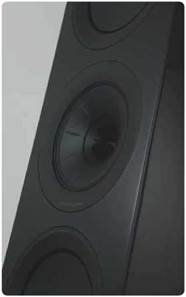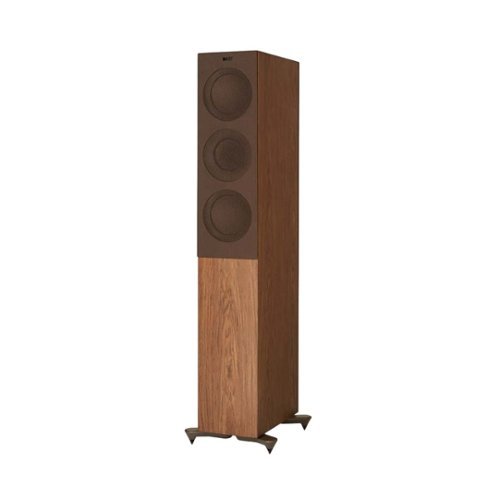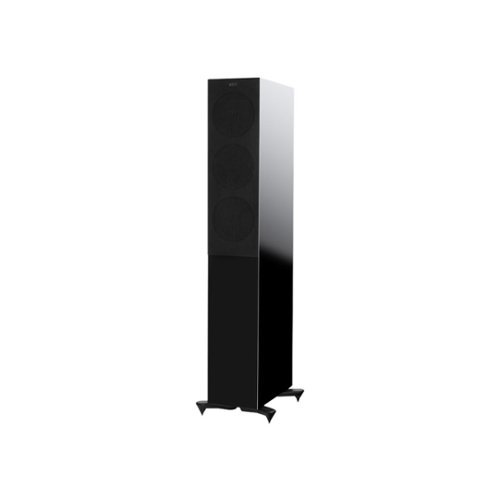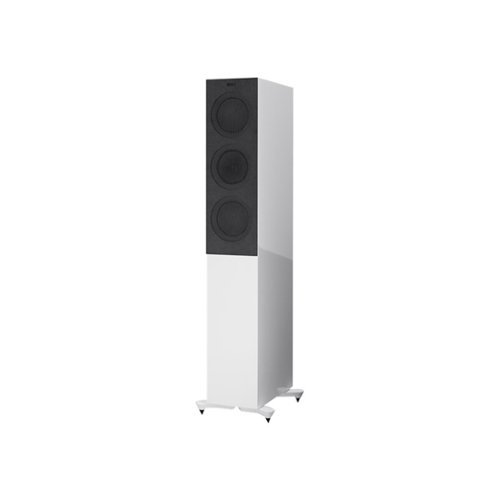Kef R5 Review
Brit-fi bastion KEF brings huge experience, and yet the new R5 has been re-engineered from the ground up. Read our Kef R5 Review.
Contents
ORIGIN UK/China
TYPE 3-way floorstanding loudspeaker
WEIGHT 27.3kg
DIMENSIONS (WxHxD) 175 x 1,025 x 344mm
FEATURES
• Uni-Q driver array: 25mm aluminium dome tweeter with 125mm aluminium mid/bass driver
• 2x 130mm hybrid aluminium bass drivers
• Quoted sensitivity: 87dB/1W/1m
DISTRIBUTOR GP Acoustics (UK) Ltd.
TELEPHONE 01622 672261
WEBSITE uk.kef.com
Slimmer than the bulky Amphion and only a squeak shorter and lighter than the imposing Triangle, the three-way R5 is an astonishing amount of floorstanding real estate for the money. What’s more, it appears to be built and finished to a standard that sets the bar for the group. Colour-coordinated drivers and flawless piano black lacquer gloss, too? Glorious. Let’s call it a value perk that big companies find easier to offer.
As with every current KEF speaker, the centrepiece is a 12th-generation Uni-Q driver array. In this instance comprising a 125mm midrange element with 25mm aluminium dome tweeter seated in the middle. Behind the tweeter is a damped cavity to reduce the effects of the engineered gap between the two drivers. KEF has been using and evolving the Uni-Q principle for decades, a firm believer
IN SIGHT

1 130mm hybrid aluminium bass driver
2 Bass reflex port
3 Bi-wireable binding posts and internal link
4 Screw-on stabilising outriggers
5 Uni-Q tweeter-midrange array
in its advantages with dispersion and integration. Even its fixture-hiding trim is shaped to reduce diffraction.
Above and below the Uni-Q, in a D’Appolito arrangement, are twin 130mm hybrid aluminium bass drivers – hybrid because they consist of a shallow concave aluminium skin joined to a paper cone in a bid to optimise rigidity and lightness with low resonance and thereby reduce distortion and improve precision.
The rear-ported cabinet’s hefty weight and inert feel are at least partially accounted for by the complexity of its reinforced structure, which uses constrained layer damping between the internal braces and cabinet panels. The goals are low resonance and a stable platform for the drive units.
Sound quality
Is there a KEF house sound? I think so, and it’s a good one – refined and transparent with a natural tonal balance and unusually well-defined imaging. Easy to live with, it hasn’t always shone in roundups like this where feistier fare has a habit of pinching points and praise. The new R5 appears to be having none of that.
Without diminishing, dressing up or in any way deserting those sterling core qualities, the re-engineering makeover has merely turned up the heat and excitement, making the R5 both more responsive and discriminating when the musical landscape demands.
In some ways, the KEF seems to marry the more obvious virtues of the Amphion (smoothness and resolution) and the Dynaudio (fluency and flow), while adding a little more muscle, scale, authority and drive into the mix. The upshot is a speaker that plays The Stanley Clarke Band’s Combat Continuum large and loud effortlessly, but does so with great finesse and meticulous preservation of detail. It isn’t the kind of detail that draws attention to itself, but simply paints a more nuanced and intricately textured sonic picture of the musical event. The speaker’s ability to render reassuringly solid stereo images and a soundstage with more front-to-back depth than any other cabinet in the group makes the exquisitely produced Anette Askvik cut sound still more mesmerisingly airy and ethereal. No less alluring is the KEF’s facility for resolving rich tonal colours and harmonics – never more tellingly than on the sumptuously arranged and almost glowing Thanks To You. Indeed, the R5 seems to take everything in its stride and, unlike some previous good-natured KEFs, isn’t to be found dozing in the corner

OUR VERDICT
When you purchase through links on our site, I may earn an affiliate commission. Here’s how it works.












